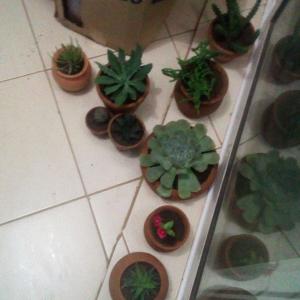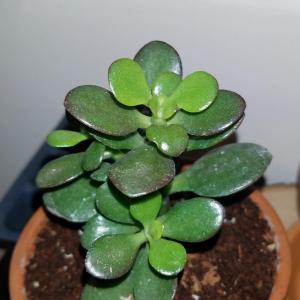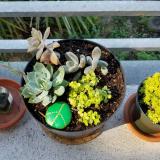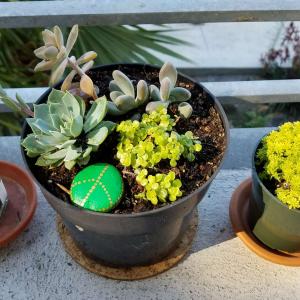chng7
2017年10月11日

Hi garden people.
I have a couple of succulents, a few echeverias and a few others.
Recently they are showing symptoms, but I'm not sure whether they are over watered or under watered. They get full morning sun and stay well lit in the shades in the afternoon. I even switched on the fan for ventilation.
They are shown in the pictures below.
Can anyone help?
On the other hand, I spotted a pink healthy root peeking out of one of the leaves. So happy!





I have a couple of succulents, a few echeverias and a few others.
Recently they are showing symptoms, but I'm not sure whether they are over watered or under watered. They get full morning sun and stay well lit in the shades in the afternoon. I even switched on the fan for ventilation.
They are shown in the pictures below.
Can anyone help?
On the other hand, I spotted a pink healthy root peeking out of one of the leaves. So happy!





1
0
shirly mei:they are fine. it's a normal process for succulent to dry up their lower leaves. you just need to pluck them off when they are dry
求助
lamad
2017年10月07日

I have no idea what any of my succulents are called, im an awful plant mom, please help!


















0
0
meriunkat:on the second column, the last picture, the plant that is long and spreading around is called crassula Muscosa
meriunkat:on the second column, second picture the dark green one with oval shaped leaves is called Sedum Rubrotinctum "jelly Bean"
meriunkat:The tall lime green one with round leaves is a type of Jade.
求助
lamad
2017年10月07日

I have no idea what any of my succulents are called, im an awful plant mom, please help!
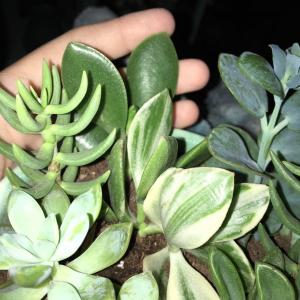
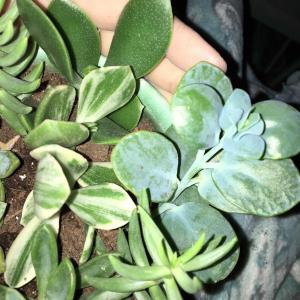
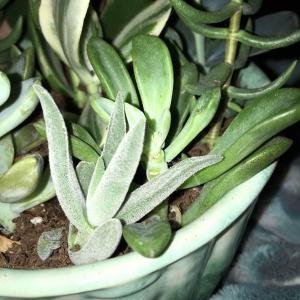
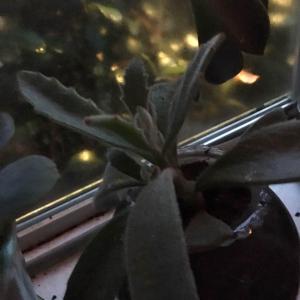

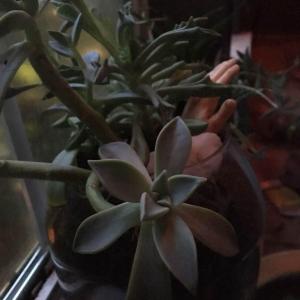
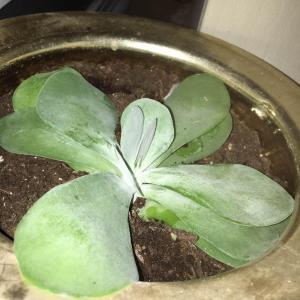

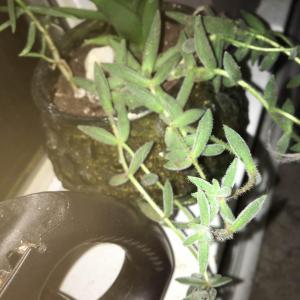









0
0
meriunkat:last column first picture is Kalanchoe Flapjacks
meriunkat:second column first picture is Kalanchoe Tomentosa
文章
Dummer. ゛☀
2017年10月02日

Salads and sautés are probably not the first things that come to mind when you see the succulent adorning your windowsill. But did you know that a lot of common succulents can also be healthy and delicious additions to your dinner plate?
Here are seven succulents that do double duty as garden adornments and nutritional powerhouses.
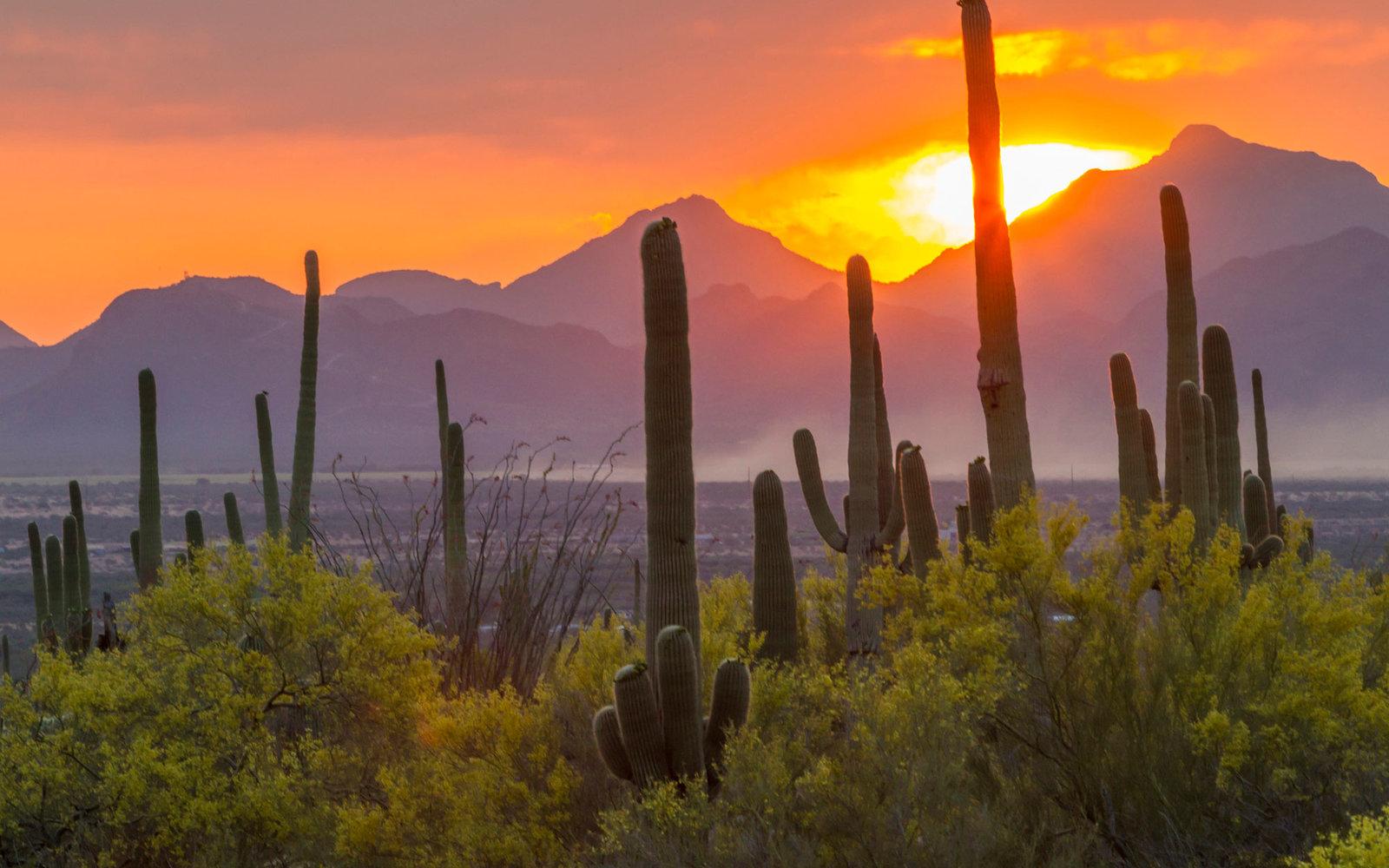
1. Saguaro
Ubiquitous in the backdrop of every old Western movie, the massive saguaro serves as more than a desert decoration. The night-blooming white flowers, which are the state flower of Arizona, produce greenish-pink fruit that contains bright red, slightly sweet pulp and small black seeds that give it a nutty flavor. The Tohono O’odham tribe of Arizona and Mexico has long used the fruit to make everything from jams and syrups to ceremonial wines.
How to Eat It: Chop the juicy pulp into salsa or even bake them into biscuits.
Health Benefits: Saguaro fruit is high in fiber, vitamin C, and B12.
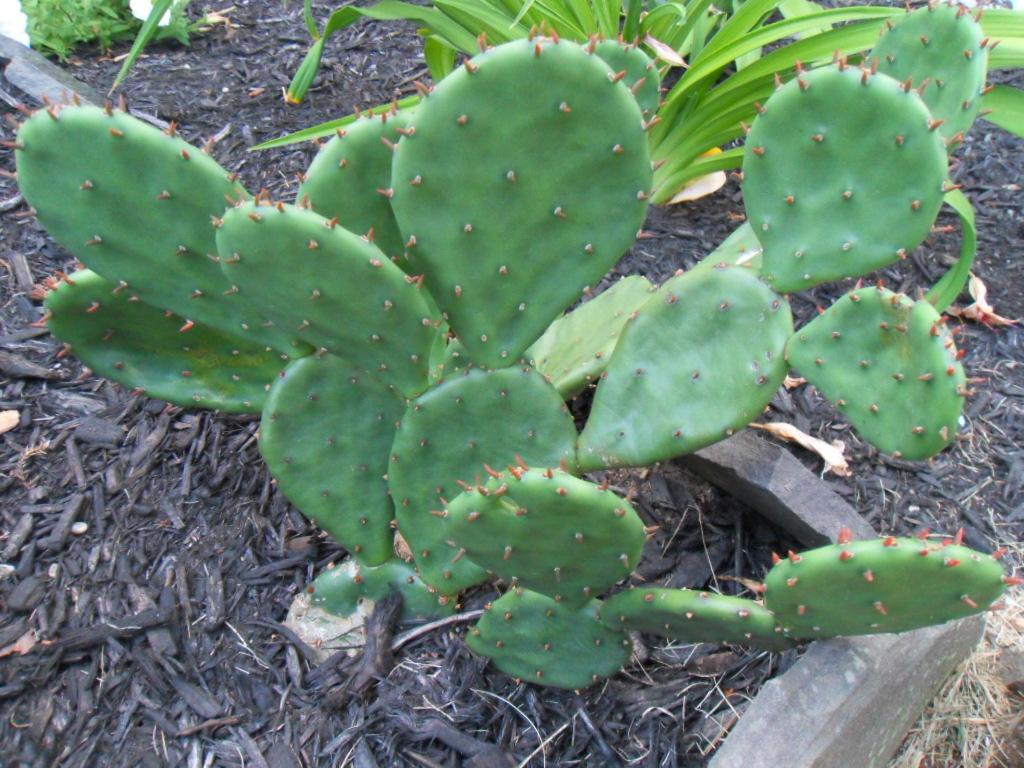
2. Opuntia
You’ve probably seen these on the menu of Mexican restaurants as “nopales”. They have a mild, neutral flavor similar to green beans, and a slightly chewy texture. Its fruit, called “tuna” in Mexico, but commonly known as the prickly pear stateside, tastes like a combination of bubblegum and watermelon.
How to Eat It: Opuntia has flat, oval leaves that can be boiled or grilled and used in salads, soups, salsas, and tacos. The fruit can be peeled, sliced, and eaten raw or juiced.
Health Benefits: The leaves are packed with fiber and calcium and just 23 calories per cup. The fruit is also low in calories and high in vitamin C.

3. Stonecrops
These flowering succulents, also known as Sedums, encompass up to 600 species of plants. Their leaves have a mild peppery, bitter flavor, and are a flavorful addition to salads and stir-frys. Be sure to eat them in moderation, however, because large quantities can cause stomach upset.
How to Eat It: Its bitterness can be mellowed out by sautéing. Red flowering sedum leaves, stems, and tubers are safe to eat raw in salads, but yellow flowering sedums have a mild toxicity and need to be cooked.
Health Benefits: They’re believed to relieve coughs and lower blood pressure, and they can be applied to the skin to relieve burns, cuts, hemorrhoids, and eczema, although there isn’t any research yet to back these claims.
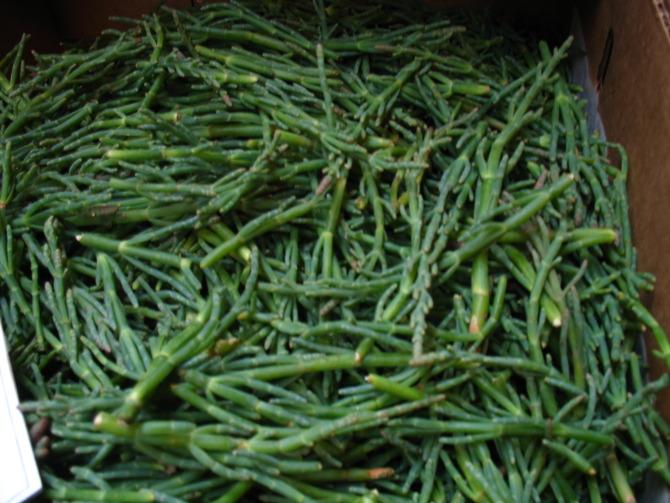
4. Sea Beans
Salicornia, or Sea Beans, are a succulent that grows on salt marshes and sandy beaches. They are gaining popularity amongst gourmet chefs and popping up in more grocery stores across the country.
How to Eat It: These “beans” can be eaten raw or pan-fried and have a flavor and texture similar to asparagus. A quick blanch can mellow out the intense sea salt flavor.
Health Benefits: High in protein, calcium, iron, and iodine.
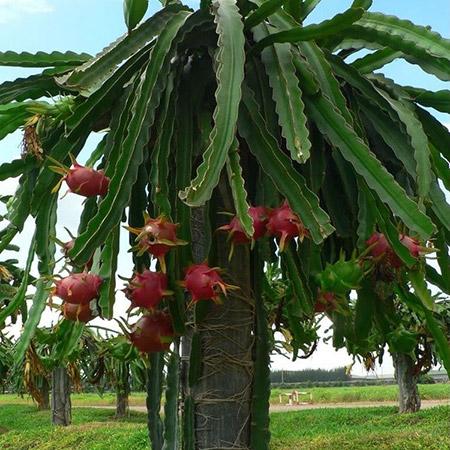
5. Dragon Fruit
Who knew that the candy-colored dragon fruit, or pitaya, came from a cactus? These bright pink fruits come from a night-blooming cactus commonly known as the Queen of the Night. Despite their flashy appearance, their flavor is very mild—many compare it to a bland, slightly sweet melon or kiwi.
How to Eat It: Simply slice it open, scoop out the white pulp, and eat, or add it to smoothies and shakes.
Health Benefits: What it lacks in intense flavor, it makes up for in nutritional content. It’s low in calories and high in protein, fiber, vitamin C, iron, and calcium.
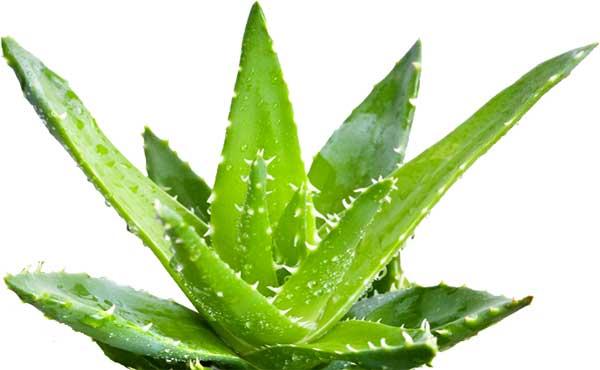
6. Aloe
You already know about this spiny succulent’s applications in treating burns, rashes, and minor cuts and scrapes, but its benefits extend much further.
How to Eat It: Peel away the tough, bitter outer leaf and blend the translucent inner part into drinks and smoothies, chop it into salads, or poach slices in water to get rid of the slimy texture.
Health Benefits: Scientists have identified over 75 phytochemicals in Aloe including high levels of antioxidants, vitamins B1, B2, B6, C, E, and folic acid. There’s also evidence that it can relieve constipation. However, large amounts can potentially be bad for your kidneys, so eat in moderation.

7. Ferocactus (Barrel Cactus)
The large, hard spines on this Southwestern American succulent make it look more like a menace than a tasty treat, but it’s completely edible. Its bright red flowers wilt to produce yellow fruit that resembles a miniature pineapple. Native Americans traditionally ate the flowers and even the flesh of the plant itself, but they’re not very palatable (but useful if you ever get lost in the desert!).
How to Eat It: The fruit has a slightly slimy pulp with edible black seeds, and can be picked right off the cactus and eaten raw. Its flavor is slightly tart and reminiscent of lemon and kiwi.
Health Benefits: Cactus fruits are high in vitamins A and C.
Here are seven succulents that do double duty as garden adornments and nutritional powerhouses.

1. Saguaro
Ubiquitous in the backdrop of every old Western movie, the massive saguaro serves as more than a desert decoration. The night-blooming white flowers, which are the state flower of Arizona, produce greenish-pink fruit that contains bright red, slightly sweet pulp and small black seeds that give it a nutty flavor. The Tohono O’odham tribe of Arizona and Mexico has long used the fruit to make everything from jams and syrups to ceremonial wines.
How to Eat It: Chop the juicy pulp into salsa or even bake them into biscuits.
Health Benefits: Saguaro fruit is high in fiber, vitamin C, and B12.

2. Opuntia
You’ve probably seen these on the menu of Mexican restaurants as “nopales”. They have a mild, neutral flavor similar to green beans, and a slightly chewy texture. Its fruit, called “tuna” in Mexico, but commonly known as the prickly pear stateside, tastes like a combination of bubblegum and watermelon.
How to Eat It: Opuntia has flat, oval leaves that can be boiled or grilled and used in salads, soups, salsas, and tacos. The fruit can be peeled, sliced, and eaten raw or juiced.
Health Benefits: The leaves are packed with fiber and calcium and just 23 calories per cup. The fruit is also low in calories and high in vitamin C.

3. Stonecrops
These flowering succulents, also known as Sedums, encompass up to 600 species of plants. Their leaves have a mild peppery, bitter flavor, and are a flavorful addition to salads and stir-frys. Be sure to eat them in moderation, however, because large quantities can cause stomach upset.
How to Eat It: Its bitterness can be mellowed out by sautéing. Red flowering sedum leaves, stems, and tubers are safe to eat raw in salads, but yellow flowering sedums have a mild toxicity and need to be cooked.
Health Benefits: They’re believed to relieve coughs and lower blood pressure, and they can be applied to the skin to relieve burns, cuts, hemorrhoids, and eczema, although there isn’t any research yet to back these claims.

4. Sea Beans
Salicornia, or Sea Beans, are a succulent that grows on salt marshes and sandy beaches. They are gaining popularity amongst gourmet chefs and popping up in more grocery stores across the country.
How to Eat It: These “beans” can be eaten raw or pan-fried and have a flavor and texture similar to asparagus. A quick blanch can mellow out the intense sea salt flavor.
Health Benefits: High in protein, calcium, iron, and iodine.

5. Dragon Fruit
Who knew that the candy-colored dragon fruit, or pitaya, came from a cactus? These bright pink fruits come from a night-blooming cactus commonly known as the Queen of the Night. Despite their flashy appearance, their flavor is very mild—many compare it to a bland, slightly sweet melon or kiwi.
How to Eat It: Simply slice it open, scoop out the white pulp, and eat, or add it to smoothies and shakes.
Health Benefits: What it lacks in intense flavor, it makes up for in nutritional content. It’s low in calories and high in protein, fiber, vitamin C, iron, and calcium.

6. Aloe
You already know about this spiny succulent’s applications in treating burns, rashes, and minor cuts and scrapes, but its benefits extend much further.
How to Eat It: Peel away the tough, bitter outer leaf and blend the translucent inner part into drinks and smoothies, chop it into salads, or poach slices in water to get rid of the slimy texture.
Health Benefits: Scientists have identified over 75 phytochemicals in Aloe including high levels of antioxidants, vitamins B1, B2, B6, C, E, and folic acid. There’s also evidence that it can relieve constipation. However, large amounts can potentially be bad for your kidneys, so eat in moderation.

7. Ferocactus (Barrel Cactus)
The large, hard spines on this Southwestern American succulent make it look more like a menace than a tasty treat, but it’s completely edible. Its bright red flowers wilt to produce yellow fruit that resembles a miniature pineapple. Native Americans traditionally ate the flowers and even the flesh of the plant itself, but they’re not very palatable (but useful if you ever get lost in the desert!).
How to Eat It: The fruit has a slightly slimy pulp with edible black seeds, and can be picked right off the cactus and eaten raw. Its flavor is slightly tart and reminiscent of lemon and kiwi.
Health Benefits: Cactus fruits are high in vitamins A and C.
1
1
文章
Dummer. ゛☀
2017年10月02日

Scientific Name
Sedum pachyphyllum Rose
Common Names
Stonecrop, Succulent Beans, Jelly Bean Plant, Jelly Beans, Silver Jelly Beans, Blue Jelly Bean, Succulents Water Plant, Many Fingers
Scientific Classification
Family: Crassulaceae
Subfamily: Sedoideae
Tribe: Sedeae
Subtribe: Sedinae
Genus: Sedum
Description
Sedum pachyphyllum is a bush forming or ground-hugging succulent, up to 1 foot (30 cm) tall, spreading over time by rooting stems and fallen leaves. The glaucous light green silvery leaves are short stumpy finger-like projections and are often tipped with red. The flowers are yellow and appear in the summer.
How to Grow and Care
When growing Sedum, keep in mind that Sedum plants need very little attention or care. They will thrive in conditions that many other plants thrive in, but will do just as well in less hospitable areas. They are ideal for that part of your yard that gets too much sun or too little water to grow anything else. A common name for Sedum is Stonecrop, due to the fact that many gardeners joke that only stones need less care and live longer.
Sedum varieties vary in height. The smallest are just a few inches tall, and the tallest can be up to 3 feet (90 cm). The large majority of varieties are shorter and they are frequently used as ground covers in xeriscape gardens or rock gardens.
Sedum varieties also vary in their hardiness. Many are hardy to USDA zone 3, while others need a warmer climate.
Sedum pachyphyllum Rose
Common Names
Stonecrop, Succulent Beans, Jelly Bean Plant, Jelly Beans, Silver Jelly Beans, Blue Jelly Bean, Succulents Water Plant, Many Fingers

Scientific Classification
Family: Crassulaceae
Subfamily: Sedoideae
Tribe: Sedeae
Subtribe: Sedinae
Genus: Sedum

Description
Sedum pachyphyllum is a bush forming or ground-hugging succulent, up to 1 foot (30 cm) tall, spreading over time by rooting stems and fallen leaves. The glaucous light green silvery leaves are short stumpy finger-like projections and are often tipped with red. The flowers are yellow and appear in the summer.

How to Grow and Care
When growing Sedum, keep in mind that Sedum plants need very little attention or care. They will thrive in conditions that many other plants thrive in, but will do just as well in less hospitable areas. They are ideal for that part of your yard that gets too much sun or too little water to grow anything else. A common name for Sedum is Stonecrop, due to the fact that many gardeners joke that only stones need less care and live longer.

Sedum varieties vary in height. The smallest are just a few inches tall, and the tallest can be up to 3 feet (90 cm). The large majority of varieties are shorter and they are frequently used as ground covers in xeriscape gardens or rock gardens.
Sedum varieties also vary in their hardiness. Many are hardy to USDA zone 3, while others need a warmer climate.
0
2
文章
Dummer. ゛☀
2017年10月01日

Salads and sautés are probably not the first things that come to mind when you see the succulent adorning your windowsill. But did you know that a lot of common succulents can also be healthy and delicious additions to your dinner plate?
Here are seven succulents that do double duty as garden adornments and nutritional powerhouses.
1. Saguaro
Ubiquitous in the backdrop of every old Western movie, the massive saguaro serves as more than a desert decoration. The night-blooming white flowers, which are the state flower of Arizona, produce greenish-pink fruit that contains bright red, slightly sweet pulp and small black seeds that give it a nutty flavor. The Tohono O’odham tribe of Arizona and Mexico has long used the fruit to make everything from jams and syrups to ceremonial wines.
How to Eat It: Chop the juicy pulp into salsa or even bake them into biscuits.
Health Benefits: Saguaro fruit is high in fiber, vitamin C, and B12.
2. Opuntia
You’ve probably seen these on the menu of Mexican restaurants as “nopales”. They have a mild, neutral flavor similar to green beans, and a slightly chewy texture. Its fruit, called “tuna” in Mexico, but commonly known as the prickly pear stateside, tastes like a combination of bubblegum and watermelon.
How to Eat It: Opuntia has flat, oval leaves that can be boiled or grilled and used in salads, soups, salsas, and tacos. The fruit can be peeled, sliced, and eaten raw or juiced.
Health Benefits: The leaves are packed with fiber and calcium and just 23 calories per cup. The fruit is also low in calories and high in vitamin C.
3. Stonecrops
These flowering succulents, also known as Sedums, encompass up to 600 species of plants. Their leaves have a mild peppery, bitter flavor, and are a flavorful addition to salads and stir-frys. Be sure to eat them in moderation, however, because large quantities can cause stomach upset.
How to Eat It: Its bitterness can be mellowed out by sautéing. Red flowering sedum leaves, stems, and tubers are safe to eat raw in salads, but yellow flowering sedums have a mild toxicity and need to be cooked.
Health Benefits: They’re believed to relieve coughs and lower blood pressure, and they can be applied to the skin to relieve burns, cuts, hemorrhoids, and eczema, although there isn’t any research yet to back these claims.
4. Sea Beans
Salicornia, or Sea Beans, are a succulent that grows on salt marshes and sandy beaches. They are gaining popularity amongst gourmet chefs and popping up in more grocery stores across the country.
How to Eat It: These “beans” can be eaten raw or pan-fried and have a flavor and texture similar to asparagus. A quick blanch can mellow out the intense sea salt flavor.
Health Benefits: High in protein, calcium, iron, and iodine.
5. Dragon Fruit
Who knew that the candy-colored dragon fruit, or pitaya, came from a cactus? These bright pink fruits come from a night-blooming cactus commonly known as the Queen of the Night. Despite their flashy appearance, their flavor is very mild—many compare it to a bland, slightly sweet melon or kiwi.
How to Eat It: Simply slice it open, scoop out the white pulp, and eat, or add it to smoothies and shakes.
Health Benefits: What it lacks in intense flavor, it makes up for in nutritional content. It’s low in calories and high in protein, fiber, vitamin C, iron, and calcium.
6. Aloe
You already know about this spiny succulent’s applications in treating burns, rashes, and minor cuts and scrapes, but its benefits extend much further.
How to Eat It: Peel away the tough, bitter outer leaf and blend the translucent inner part into drinks and smoothies, chop it into salads, or poach slices in water to get rid of the slimy texture.
Health Benefits: Scientists have identified over 75 phytochemicals in Aloe including high levels of antioxidants, vitamins B1, B2, B6, C, E, and folic acid. There’s also evidence that it can relieve constipation. However, large amounts can potentially be bad for your kidneys, so eat in moderation.
7. Ferocactus (Barrel Cactus)
The large, hard spines on this Southwestern American succulent make it look more like a menace than a tasty treat, but it’s completely edible. Its bright red flowers wilt to produce yellow fruit that resembles a miniature pineapple. Native Americans traditionally ate the flowers and even the flesh of the plant itself, but they’re not very palatable (but useful if you ever get lost in the desert!).
How to Eat It: The fruit has a slightly slimy pulp with edible black seeds, and can be picked right off the cactus and eaten raw. Its flavor is slightly tart and reminiscent of lemon and kiwi.
Health Benefits: Cactus fruits are high in vitamins A and C.

Here are seven succulents that do double duty as garden adornments and nutritional powerhouses.
1. Saguaro
Ubiquitous in the backdrop of every old Western movie, the massive saguaro serves as more than a desert decoration. The night-blooming white flowers, which are the state flower of Arizona, produce greenish-pink fruit that contains bright red, slightly sweet pulp and small black seeds that give it a nutty flavor. The Tohono O’odham tribe of Arizona and Mexico has long used the fruit to make everything from jams and syrups to ceremonial wines.

How to Eat It: Chop the juicy pulp into salsa or even bake them into biscuits.
Health Benefits: Saguaro fruit is high in fiber, vitamin C, and B12.
2. Opuntia
You’ve probably seen these on the menu of Mexican restaurants as “nopales”. They have a mild, neutral flavor similar to green beans, and a slightly chewy texture. Its fruit, called “tuna” in Mexico, but commonly known as the prickly pear stateside, tastes like a combination of bubblegum and watermelon.

How to Eat It: Opuntia has flat, oval leaves that can be boiled or grilled and used in salads, soups, salsas, and tacos. The fruit can be peeled, sliced, and eaten raw or juiced.
Health Benefits: The leaves are packed with fiber and calcium and just 23 calories per cup. The fruit is also low in calories and high in vitamin C.
3. Stonecrops
These flowering succulents, also known as Sedums, encompass up to 600 species of plants. Their leaves have a mild peppery, bitter flavor, and are a flavorful addition to salads and stir-frys. Be sure to eat them in moderation, however, because large quantities can cause stomach upset.

How to Eat It: Its bitterness can be mellowed out by sautéing. Red flowering sedum leaves, stems, and tubers are safe to eat raw in salads, but yellow flowering sedums have a mild toxicity and need to be cooked.
Health Benefits: They’re believed to relieve coughs and lower blood pressure, and they can be applied to the skin to relieve burns, cuts, hemorrhoids, and eczema, although there isn’t any research yet to back these claims.

4. Sea Beans
Salicornia, or Sea Beans, are a succulent that grows on salt marshes and sandy beaches. They are gaining popularity amongst gourmet chefs and popping up in more grocery stores across the country.
How to Eat It: These “beans” can be eaten raw or pan-fried and have a flavor and texture similar to asparagus. A quick blanch can mellow out the intense sea salt flavor.
Health Benefits: High in protein, calcium, iron, and iodine.
5. Dragon Fruit
Who knew that the candy-colored dragon fruit, or pitaya, came from a cactus? These bright pink fruits come from a night-blooming cactus commonly known as the Queen of the Night. Despite their flashy appearance, their flavor is very mild—many compare it to a bland, slightly sweet melon or kiwi.
How to Eat It: Simply slice it open, scoop out the white pulp, and eat, or add it to smoothies and shakes.

Health Benefits: What it lacks in intense flavor, it makes up for in nutritional content. It’s low in calories and high in protein, fiber, vitamin C, iron, and calcium.
6. Aloe
You already know about this spiny succulent’s applications in treating burns, rashes, and minor cuts and scrapes, but its benefits extend much further.
How to Eat It: Peel away the tough, bitter outer leaf and blend the translucent inner part into drinks and smoothies, chop it into salads, or poach slices in water to get rid of the slimy texture.
Health Benefits: Scientists have identified over 75 phytochemicals in Aloe including high levels of antioxidants, vitamins B1, B2, B6, C, E, and folic acid. There’s also evidence that it can relieve constipation. However, large amounts can potentially be bad for your kidneys, so eat in moderation.

7. Ferocactus (Barrel Cactus)
The large, hard spines on this Southwestern American succulent make it look more like a menace than a tasty treat, but it’s completely edible. Its bright red flowers wilt to produce yellow fruit that resembles a miniature pineapple. Native Americans traditionally ate the flowers and even the flesh of the plant itself, but they’re not very palatable (but useful if you ever get lost in the desert!).

How to Eat It: The fruit has a slightly slimy pulp with edible black seeds, and can be picked right off the cactus and eaten raw. Its flavor is slightly tart and reminiscent of lemon and kiwi.
Health Benefits: Cactus fruits are high in vitamins A and C.
0
0
文章
Dummer. ゛☀
2017年10月01日

Agave plants are native to Mexico, southern and western United States and central and tropical South America. They are succulents with a large rosette of thick, fleshy leaves, each ending generally in a sharp point and with a spiny margin. The stout stem is usually short and the leaves apparently springing from the root. Along with plants from the related genus Yucca, various Agave species are popular ornamental plants.
Each rosette is monocarpic and grows slowly to flower only once. During flowering, a tall stem grows from the center of the leaf rosette and bears a large number of short, tubular flowers. After development of fruit, the original Agave plant dies, but suckers are frequently produced from the base of the stem, which become new plants.
The most beautiful species of Agave include: Agave ‘Blue Glow’, Agave vilmoriniana, Agave filifera, Agave geminiflora, Agave montana, Agave potatorum, Agave attenuata, Agave macroacantha, Agave desmettiana, Agave salmiana var. ferox, Agave victoriae-reginae, Agave bovicornuta, Agave americana, Agave angustifolia and Agave deserti.

Each rosette is monocarpic and grows slowly to flower only once. During flowering, a tall stem grows from the center of the leaf rosette and bears a large number of short, tubular flowers. After development of fruit, the original Agave plant dies, but suckers are frequently produced from the base of the stem, which become new plants.

The most beautiful species of Agave include: Agave ‘Blue Glow’, Agave vilmoriniana, Agave filifera, Agave geminiflora, Agave montana, Agave potatorum, Agave attenuata, Agave macroacantha, Agave desmettiana, Agave salmiana var. ferox, Agave victoriae-reginae, Agave bovicornuta, Agave americana, Agave angustifolia and Agave deserti.

0
0
求助
Aelo
2017年10月01日

Can someone identify these succulents? I would like to know what they are and thank you!
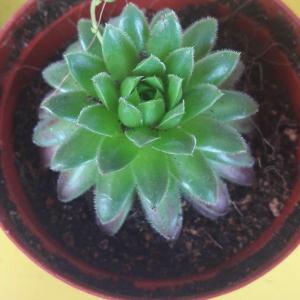
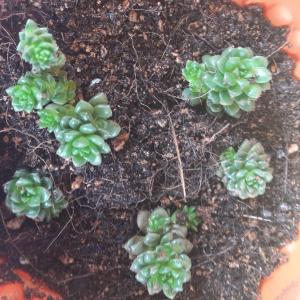


1
0
🍧🍬橘曦🍡🍰:图一 观音莲
文章
Dummer. ゛☀
2017年09月30日

Low-maintenance plants are becoming more and more popular with time, mostly due to the busy life we are living. This is why succulents are one of the most wanted plants at the moment. They are not only easy to care for but are also suitable for growing in containers and are stylish and cool to look at. You can use them in border areas of flower beds, stone and wall beds.
We believe that this is just the start of the era of succulents – with the climate changes and busy lifestyle gardener will turn more and more to low-care, drought-tough plants. Knowing all of these facts, you are surely considering to add these little beauties to your home garden. Choose one of these 10 stylish succulents we are suggesting today as they are all low-maintenance, stylish and simply gorgeous.
1. Golden Sedum (Sedum adolphii)
Sedum adolphii or most commonly known as Golden Sedum will make a great addition to your garden. What makes this species special and one of the best to grow in your home or garden is the fact that they change color. They will turn brighter orange when exposed to sun which is why they are perfect to plant along blue and silver colored flowers. The star shaped flowers will add charm to any garden. Not to mention they are low maintenance and drought tolerant.
2. Hen and Chicks (Echeveria elegans)
Echeveria elegans or Hen and Chicks is a classic succulent that is most commonly present in almost every home and garden. They grow well indoors and out in both cool or hot temperatures. They got the name because of the rosette shape and their ability to produce plenty of “babies”. What makes them one of the most popular succulents is also their ability to thrive on any condition, which means that even poor soil and a tiny container is enough to grow them. They don’t need fertilizer and require very little water.
3. Aloe vera
Aloe vera, also known as Aloe barbadensis, can be grown both outside and inside. Just make sure you place them in full sun. As with any succulent, watering should be minimal during winter while in summer you should soak the soil then let it dry before watering it again. Because of its shallow roots we recommend choosing a wide pot instead of a deep one when replanting. Aloe vera plants are easily propagated. Just remove the offsets which are produced around the base of mature plants when they are a couple inches tall.
4. Burro’s Tail (Sedum morganianum)
Sedum morganianum or popularly called Burro’s Tail is a beautiful blue colored delicate succulent. When it blooms tiny little red flowers appear. All you need to know if you want to grow this beautiful succulent is that it needs gritty soil, good drainage, sunshine and protection from extreme cold temperatures. This means you can grow it both indoors and in your garden. Only downfall is its delicacy – the leaves will fall off at the slightest touch. Good thing is that you can use the fallen leaves to propagate new plants.
5. Zebra Plant (Haworthia attenuata)
You will easily fall in love with this beautiful succulent. Its beautifully patterned leaves with leathery surface, the small simple white flowers it produces, the fact that it is one of the easiest plants to grow – all these make Haworthia attenuata a favorite plant. This succulent has only two enemies – frost and excess water. If you live in a colder climate keep it inside at least during the winter.
6. Echeveria ‘Lady Aquarius’
Echeverias are among the most popular succulents and Echeveria ‘Lady Aquarius’ is surely the favorite among them. It looks like a ruffly underwater sea anemone forming loose, up to 8 inches (20 cm) rosette. You can grow this beautiful succulent even if you are a beginner gardener as it is tough and resilient. To keep your plant happy and healthy place it in full sun and provide good drainage.
7. Jade Plant (Crassula ovata)
Crassula ovata or commonly known as Jade Plant or Jade Tree is one of the most popular succulents, especially as a house plant. Just like any other succulent they prefer strong light and a well-draining soil. They can tolerate low light and require very little watering. It is very easy to propagate them by simply rooting a cutting of the stem or leaves. Jade Plants’ leaves are rubbery to the touch and quite flexible. If grown in strong light they will get a beautiful red margin.
8. Flaming Katy (Kalanchoe blossfeldiana)
Kalanchoe is a succulent praised for its beautiful flowers and Kalanchoe blossfeldiana is the most popular and common species. It can have orange, pink, red, white, or red flowers and some varieties have double flowers. It blooms in winter which makes it even more wanted in every home garden. This attractive plant is low-maintenance like any other succulent and will thrive perfectly in full sun with very little water. Be aware that the frost will hurt it.
9. Queen Victoria Agave (Agave victoriae-reginae)
Agaves are native to the Americas. They are one of the most popular succulents due to their rosette shape, drought resistance and low maintenance in general. The blooming happens once as the plant will die afterwards. Agave victoriae-reginae is probably the favorite among Agave species. It grows to the size of a soccer ball over time.
10. Black Rose (Aeonium arboreum ‘Zwartkop’)
Aeoniums are popular succulents because their resemble big, fleshy-petalled daisies and of course they are easy to grow both on your home or in your garden. There are many hybrids and species out there but Aeonium arboreum ‘Zwartkop’ is surely a show stopper with its magenta-black. In winter bright yellow flowers contrast with the dark foliage. For best results provide full sun and well-drained soil.

We believe that this is just the start of the era of succulents – with the climate changes and busy lifestyle gardener will turn more and more to low-care, drought-tough plants. Knowing all of these facts, you are surely considering to add these little beauties to your home garden. Choose one of these 10 stylish succulents we are suggesting today as they are all low-maintenance, stylish and simply gorgeous.

1. Golden Sedum (Sedum adolphii)
Sedum adolphii or most commonly known as Golden Sedum will make a great addition to your garden. What makes this species special and one of the best to grow in your home or garden is the fact that they change color. They will turn brighter orange when exposed to sun which is why they are perfect to plant along blue and silver colored flowers. The star shaped flowers will add charm to any garden. Not to mention they are low maintenance and drought tolerant.

2. Hen and Chicks (Echeveria elegans)
Echeveria elegans or Hen and Chicks is a classic succulent that is most commonly present in almost every home and garden. They grow well indoors and out in both cool or hot temperatures. They got the name because of the rosette shape and their ability to produce plenty of “babies”. What makes them one of the most popular succulents is also their ability to thrive on any condition, which means that even poor soil and a tiny container is enough to grow them. They don’t need fertilizer and require very little water.

3. Aloe vera
Aloe vera, also known as Aloe barbadensis, can be grown both outside and inside. Just make sure you place them in full sun. As with any succulent, watering should be minimal during winter while in summer you should soak the soil then let it dry before watering it again. Because of its shallow roots we recommend choosing a wide pot instead of a deep one when replanting. Aloe vera plants are easily propagated. Just remove the offsets which are produced around the base of mature plants when they are a couple inches tall.

4. Burro’s Tail (Sedum morganianum)
Sedum morganianum or popularly called Burro’s Tail is a beautiful blue colored delicate succulent. When it blooms tiny little red flowers appear. All you need to know if you want to grow this beautiful succulent is that it needs gritty soil, good drainage, sunshine and protection from extreme cold temperatures. This means you can grow it both indoors and in your garden. Only downfall is its delicacy – the leaves will fall off at the slightest touch. Good thing is that you can use the fallen leaves to propagate new plants.

5. Zebra Plant (Haworthia attenuata)
You will easily fall in love with this beautiful succulent. Its beautifully patterned leaves with leathery surface, the small simple white flowers it produces, the fact that it is one of the easiest plants to grow – all these make Haworthia attenuata a favorite plant. This succulent has only two enemies – frost and excess water. If you live in a colder climate keep it inside at least during the winter.

6. Echeveria ‘Lady Aquarius’
Echeverias are among the most popular succulents and Echeveria ‘Lady Aquarius’ is surely the favorite among them. It looks like a ruffly underwater sea anemone forming loose, up to 8 inches (20 cm) rosette. You can grow this beautiful succulent even if you are a beginner gardener as it is tough and resilient. To keep your plant happy and healthy place it in full sun and provide good drainage.

7. Jade Plant (Crassula ovata)
Crassula ovata or commonly known as Jade Plant or Jade Tree is one of the most popular succulents, especially as a house plant. Just like any other succulent they prefer strong light and a well-draining soil. They can tolerate low light and require very little watering. It is very easy to propagate them by simply rooting a cutting of the stem or leaves. Jade Plants’ leaves are rubbery to the touch and quite flexible. If grown in strong light they will get a beautiful red margin.

8. Flaming Katy (Kalanchoe blossfeldiana)
Kalanchoe is a succulent praised for its beautiful flowers and Kalanchoe blossfeldiana is the most popular and common species. It can have orange, pink, red, white, or red flowers and some varieties have double flowers. It blooms in winter which makes it even more wanted in every home garden. This attractive plant is low-maintenance like any other succulent and will thrive perfectly in full sun with very little water. Be aware that the frost will hurt it.

9. Queen Victoria Agave (Agave victoriae-reginae)
Agaves are native to the Americas. They are one of the most popular succulents due to their rosette shape, drought resistance and low maintenance in general. The blooming happens once as the plant will die afterwards. Agave victoriae-reginae is probably the favorite among Agave species. It grows to the size of a soccer ball over time.

10. Black Rose (Aeonium arboreum ‘Zwartkop’)
Aeoniums are popular succulents because their resemble big, fleshy-petalled daisies and of course they are easy to grow both on your home or in your garden. There are many hybrids and species out there but Aeonium arboreum ‘Zwartkop’ is surely a show stopper with its magenta-black. In winter bright yellow flowers contrast with the dark foliage. For best results provide full sun and well-drained soil.
0
0
文章
Dummer. ゛☀
2017年09月30日

Aeonium is a genus whose species are prized as some of the most ornamental succulents, with foliage that ranges from vivid chartreuse to nearly black, and that’s solid colored, banded or striped. The 35 species have distinct sizes and colors, with hybridization expanding varieties into the thousands. Aeoniums are frost tender, preferring the mild Mediterranean climate of their native Canary Islands, but you’ll find Aeonium to be more tolerant of soil and moisture than desert natives.
Where it will grow: Hardy to 25 degrees Fahrenheit (-4 degrees Celsius); USDA zones 9a to 11b
Water requirement: Low, but prefers more watering than most succulents
Light requirement: Full sun to partial shade (full sun in cooler climates)
Mature size: Varies with species
Benefits and tolerances: Soil tolerant; more tolerant of moisture than other succulents
Seasonal interest: Year-round; Aeonium are monocarpic, meaning they flower once, set seed and then die
When to plant: It’s best to plant cuttings in fall; allow the stem end to become callous
Succulents are very ornamental, and Aeonium are especially so. Lush, fleshy leaves are held in the typically tight rosette form, with edges often rounded out. While Aeonium once were included in the Sempervivum genus, frost sensitivity and subtle differences led to a division.
Some species, like Aeonium canariense, produce offsets profusely while keeping low to the ground, like a mat. A. canariensis can burn if it gets prolonged sun exposure. They stay greener in bright to low light and can even tolerate a few hours of shade.
Others, like Aeonium arboreum ‘Zwartkop’ (or ‘Schwartzkopf’) grow on stalks to 3 or 4 feet (0.9 to 1.2 m) tall. A. arboreum ‘Zwartkop’ is prized for its near-black foliage. Sunlight deepens its color; dark purple foliage can fade to green over winter.
Plants can become leggy with age. To tidy up, cut the primary rosette off, allow the end to become calloused and replant. It will reroot, and the stem will sprout new growth as well.
Aeoniums are monocarpic, producing one flower stalk before dying. Most Aeonium in cultivation are branching forms, meaning only one rosette will fade.
Planting notes
Aeonium thrive in regions with wet winters and dry summers, but can survive elsewhere. Shelter them from the sun in hot climates. Allow plenty of airflow and ventilation where there’s more humidity. They are winter growers and may go into dormancy in summer, especially in extremely warm climates.Aeonium are more tolerant of moisture than other succulents, actually preferring the soil to remain a little moist. Prevent the soil from drying out completely but take care to not overwater. Aeonium do well in most soils other than clay.

Where it will grow: Hardy to 25 degrees Fahrenheit (-4 degrees Celsius); USDA zones 9a to 11b
Water requirement: Low, but prefers more watering than most succulents
Light requirement: Full sun to partial shade (full sun in cooler climates)
Mature size: Varies with species
Benefits and tolerances: Soil tolerant; more tolerant of moisture than other succulents
Seasonal interest: Year-round; Aeonium are monocarpic, meaning they flower once, set seed and then die
When to plant: It’s best to plant cuttings in fall; allow the stem end to become callous

Succulents are very ornamental, and Aeonium are especially so. Lush, fleshy leaves are held in the typically tight rosette form, with edges often rounded out. While Aeonium once were included in the Sempervivum genus, frost sensitivity and subtle differences led to a division.
Some species, like Aeonium canariense, produce offsets profusely while keeping low to the ground, like a mat. A. canariensis can burn if it gets prolonged sun exposure. They stay greener in bright to low light and can even tolerate a few hours of shade.
Others, like Aeonium arboreum ‘Zwartkop’ (or ‘Schwartzkopf’) grow on stalks to 3 or 4 feet (0.9 to 1.2 m) tall. A. arboreum ‘Zwartkop’ is prized for its near-black foliage. Sunlight deepens its color; dark purple foliage can fade to green over winter.

Plants can become leggy with age. To tidy up, cut the primary rosette off, allow the end to become calloused and replant. It will reroot, and the stem will sprout new growth as well.
Aeoniums are monocarpic, producing one flower stalk before dying. Most Aeonium in cultivation are branching forms, meaning only one rosette will fade.

Planting notes
Aeonium thrive in regions with wet winters and dry summers, but can survive elsewhere. Shelter them from the sun in hot climates. Allow plenty of airflow and ventilation where there’s more humidity. They are winter growers and may go into dormancy in summer, especially in extremely warm climates.Aeonium are more tolerant of moisture than other succulents, actually preferring the soil to remain a little moist. Prevent the soil from drying out completely but take care to not overwater. Aeonium do well in most soils other than clay.
0
0




